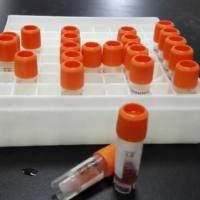Detection of Integrated Herpesvirus Genomes by Fluorescence In Situ Hybridization (FISH)
互联网
498
Fluorescence in situ hybridization (FISH) is widely used to visualize nucleotide sequences in interphase cells or on metaphase chromosomes using specific probes that are complementary to the respective targets. Besides its broad application in cytogenetics and cancer research, FISH facilitates the localization of virus genomes in infected cells. Some herpesviruses, including human herpesvirus 6 (HHV-6) and Marek’s disease virus (MDV), have been shown to integrate their genetic material into host chromosomes, which allows transmission of HHV-6 via the germ line and is required for efficient MDV-induced tumor formation. We describe here the detection by FISH of integrated herpesvirus genomes in metaphase chromosomes and interphase nuclei of herpesvirus-infected cells.








